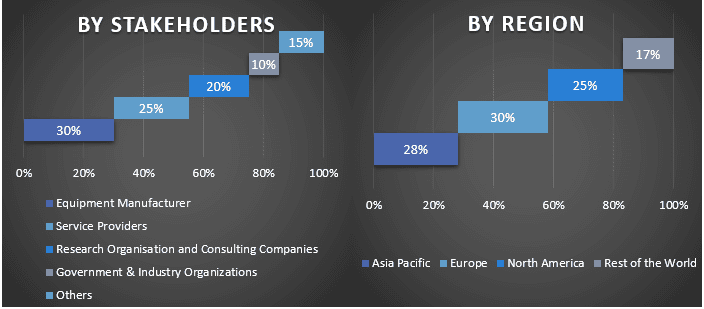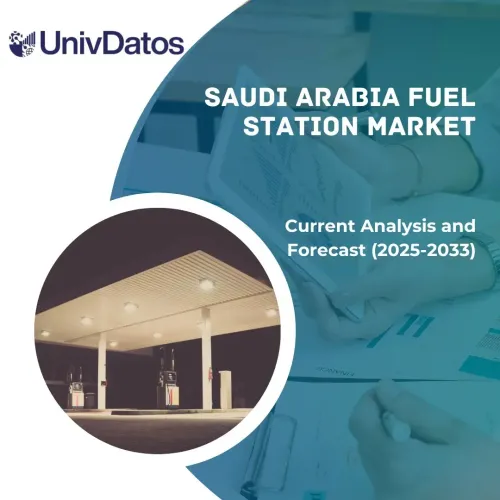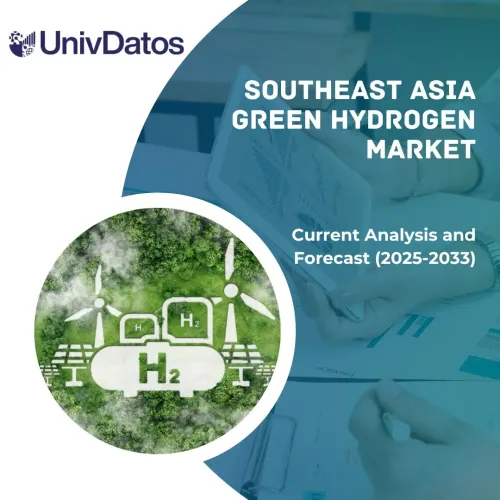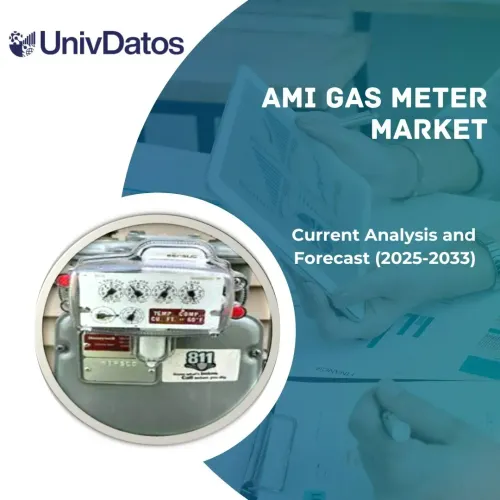
全球換流變壓器市場預計在預測期內以約 15% 的顯著速度增長。 換流變壓器通常設計為增加渦流損耗並承受直流電壓。所有換流變壓器都配備有靜電屏蔽,該靜電屏蔽連接在次級和初級繞組之間的接地線上。該屏蔽用於減少由次級繞組引起的電容效應,同時減少干擾的傳輸。換流變壓器有助於取代傳統的架空線,以實現長距離的電力傳輸。此外,換流變壓器用於在一端將直流電轉換為交流電,在另一端將交流電轉換為直流電。此外,對高效電力傳輸解決方案、電網技術、水電廠、海上風電場以及政府基礎設施的需求不斷增長,預計將推動換流變壓器市場的增長。對優化和高效發電以及海上風電場發電的關注將對市場產生積極影響。初始設置成本限制了市場。然而,諸如 AI 和 IoT 之類的技術的實施將在未來降低總安裝成本。全球較高的城市化率以及工業化提高了對綠色能源等其他替代能源的需求,這在某種程度上將增加對換流變壓器的需求。
通用電氣、Kirloskar Electric Company Limited、山東電力設備有限公司、三菱電機、Bharat Heavy Electricals Limited、Crompton Greaves Ltd.、西變XD變壓器有限公司、東芝公司、西門子股份公司和 ABB Ltd. 是市場上的一些主要參與者。這些參與者已進行了多項併購以及合作夥伴關係,以便為客戶提供高科技和創新產品/技術。
報告中提供的見解
“在產品中,多端換流變壓器類別預計在預測期內將實現穩健的複合年增長率”
根據產品,市場分為單極、雙極、背靠背和多端。由於多端換流變壓器在配電應用中的採用,預計多端換流變壓器在預測期內將呈現更高的市場增長。此外,多端換流變壓器具有三端配置,使其適用於三種不同的電壓級別。此外,多端換流變壓器還具有將高電平直流電壓轉換為多個吞吐量的優勢,這將在未來推動多端細分市場。
“在電壓等級中,401kV-600kV 類別預計在預測期內將佔據顯著的市場份額”
根據孔型,換流變壓器市場分為高達 200kV、201kV-400kV、401kV-600kV、601kV-800kV 和 800kV 以上。由於石油產品價格上漲、快速工業化以及對海上風電場發電需求的激增,預計 401kV-600kV 細分市場在預測期內將顯示出顯著的市場潛力。
“亞太地區將佔據顯著的市場份額”
亞太地區在 2021 年佔據了最高的市場份額,預計在預測期內將保持不變,原因是該地區的投資不斷增加、新興經濟體、快速工業化以及對電力的需求不斷增加,以及政府基礎設施支持電力節約。此外,換流變壓器領域的技術進步,例如 IoT 和機器學習,將降低總安裝和運營成本,並有望增加該地區的市場。此外,投資和 FDI 流入的增加使公司能夠進行研發並提供優化的解決方案。例如,根據《世界投資報告》,外國直接投資增加了 19%,在 2021 年達到 6190 億美元。
購買本報告的理由:
- 該研究包括經過認證的關鍵行業專家驗證的市場規模和預測分析。
- 該報告一目了然地快速回顧了整個行業的績效。
- 該報告涵蓋了對主要行業同行深入分析,主要側重於關鍵業務財務、產品組合、擴張戰略和近期發展。
- 詳細檢查行業中存在的驅動因素、限制、關鍵趨勢和機會。
- 該研究全面涵蓋了跨不同細分市場的市場。
- 深入分析行業的區域層面。
客製化選項:
全球換流變壓器市場可以根據需求或任何其他細分市場進一步客製化。除此之外,UMI 了解您可能有自己的業務需求,因此請隨時與我們聯繫以獲取完全符合您要求的報告。
目錄
轉換器變壓器市場分析 (2022-2028) 的研究方法
分析歷史市場、估計當前市場以及預測全球轉換器變壓器市場的未來市場是創建和分析全球主要地區轉換器變壓器採用情況的三個主要步驟。 我們進行了詳盡的二級研究,以收集歷史市場數據並估計當前市場規模。 其次,為了驗證這些見解,我們考慮了許多發現和假設。 此外,我們還與全球轉換器變壓器市場價值鏈中的行業專家進行了詳盡的初步訪談。 在通過初步訪談對市場數據進行假設和驗證後,我們採用了自上而下/自下而上的方法來預測完整的市場規模。 之後,採用市場細分和數據三角測量方法來估計和分析行業相關的各個細分市場和子細分市場的市場規模。 詳細方法如下所述:
歷史市場規模分析
步驟 1:深入研究二級來源:
我們進行了詳細的二級研究,通過公司內部來源(例如年度報告和財務報表、業績演示文稿、新聞稿等)以及外部來源(包括期刊、新聞和文章、政府出版物、競爭對手出版物、行業報告、第三方數據庫和其他可信出版物)來獲取轉換器變壓器市場的歷史市場規模。
步驟 2:市場細分:
在獲得轉換器變壓器市場的歷史市場規模後,我們進行了詳細的二級分析,以收集主要地區不同細分市場和子細分市場的歷史市場見解和份額。 報告中包含的主要細分市場包括產品、功率等級、應用和電壓等級。 此外,還進行了國家/地區級別的分析,以評估該地區測試模型的總體採用情況。
步驟 3:因素分析:
在獲得不同細分市場和子細分市場的歷史市場規模後,我們進行了詳細的因素分析,以估計轉換器變壓器市場的當前市場規模。 此外,我們使用自變量和因變量(例如各種產品、功率等級、應用和轉換器變壓器的電壓等級)進行了因素分析。 我們對需求和供應方面的情況進行了徹底的分析,考慮了全球轉換器變壓器市場領域的頂級合作夥伴關係、併購、業務擴張和產品發布。
當前市場規模估計和預測
當前市場規模:基於上述 3 個步驟的可操作見解,我們得出了全球轉換器變壓器市場的當前市場規模、主要參與者以及各個細分市場的市場份額。 所有必需的百分比份額分配和市場細分均使用上述二級方法確定,並通過初步訪談進行驗證。
估計與預測:對於市場估計和預測,我們為不同的因素分配了權重,包括驅動因素和趨勢、限制以及利益相關者可獲得的機會。 在分析了這些因素後,我們應用了相關的預測技術,即自上而下/自下而上的方法,以得出 2028 年全球主要市場不同細分市場和子細分市場的市場預測。 用於估計市場規模的研究方法包括:
- 該行業的市場規模,以收入(美元)和國內主要市場中轉換器變壓器市場的採用率來衡量。
- 市場細分和子細分的全部百分比份額、分配和細分。
- 全球轉換器變壓器市場中,按提供的產品劃分的主要參與者。 此外,這些參與者為在快速增長的市場中競爭而採用的增長策略。
市場規模和份額驗證
初步研究:我們與主要地區的關鍵意見領袖 (KOL)(包括高層管理人員(CXO/VP、銷售主管、營銷主管、運營主管、區域主管、國家/地區主管等))進行了深入的訪談。 然後對初步研究結果進行了總結,並進行了統計分析以證明所述假設。 初步研究的輸入與二級研究結果相結合,從而將信息轉化為可操作的見解。
不同地區的初步參與者分配

市場工程
我們採用數據三角測量技術來完成整體市場估計,並得出全球轉換器變壓器市場各個細分市場和子細分市場的精確統計數據。 在研究了全球轉換器變壓器市場中產品、功率等級、應用和電壓等級領域的各種參數和趨勢後,數據被劃分為多個細分市場和子細分市場。
全球轉換器變壓器市場研究的主要目標
研究中指出了全球轉換器變壓器市場的當前和未來市場趨勢。 投資者可以獲得戰略見解,從而根據研究中進行的定性和定量分析來決定投資。 當前和未來市場趨勢決定了區域層面的市場總體吸引力,從而為行業參與者提供了一個利用未開發市場以從先行者優勢中受益的平台。 該研究的其他定量目標包括:
- 分析轉換器變壓器市場的當前和預測市場規模,以價值(美元)計。 此外,分析不同細分市場和子細分市場的當前和預測市場規模。
- 研究中的細分市場包括產品、功率等級、應用和電壓等級領域。
- 定義和分析轉換器變壓器的監管框架
- 分析與各種中介機構的存在相關的價值鏈,並分析行業的客戶和競爭對手的行為。
- 分析主要地區轉換器變壓器市場的當前和預測市場規模。
- 報告中研究的主要地區國家/地區包括亞太地區、歐洲、北美和世界其他地區。
- 轉換器變壓器市場的公司概況以及市場參與者為在快速增長的市場中維持發展而採用的增長策略。
- 深入的行業區域層面分析。
相關 報告
購買此商品的客戶也購買了










